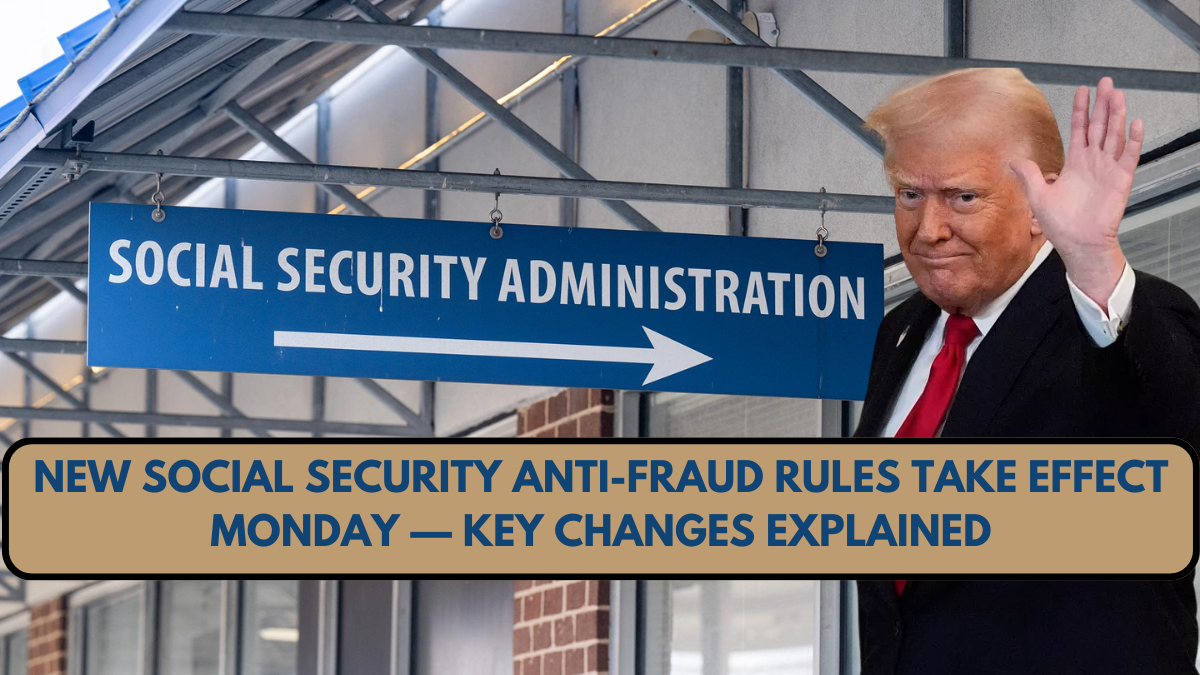Starting Monday, April 15, 2025, the Social Security Administration (SSA) is rolling out a new set of anti-fraud policies aimed at tightening security and protecting millions of Americans from identity theft and benefit fraud. These changes, particularly focused on phone-based claims and direct deposit updates, come in response to a growing number of scam attempts targeting Social Security recipients.
What’s Changing?
The SSA’s latest update centers around two key adjustments:
1. Enhanced Fraud Screening for Phone Claims
All Social Security benefit claims filed by phone will now undergo fraud detection screening. If a claim is flagged, the applicant will be required to verify their identity in person at a local SSA office.
This update is designed to address rising concerns about fraudulent benefit claims, especially those involving unauthorized changes to personal information such as direct deposit details. According to the SSA, over 40% of recent fraud cases involving altered direct deposit accounts originated from telephone interactions.
“We’re committed to keeping services accessible while improving our ability to detect and stop fraud,” said Acting SSA Commissioner Leland Dudek in a press release on the agency’s website.
2. Direct Deposit Changes No Longer Accepted Over the Phone

Another major change is that beneficiaries can no longer update their direct deposit information by phone. Instead, users must either:
- Use the my Social Security online portal, or
- Visit a local Social Security office in person.
This policy aims to significantly reduce the risk of scammers intercepting benefits by impersonating claimants and changing where funds are sent.
Phone Claims Still Accepted—with Safeguards
Initially, the SSA considered restricting or eliminating certain types of claims over the phone. However, following public feedback and internal reviews, the agency has decided to continue accepting all claim types by phone, including:
- Retirement
- Survivors
- Disability
- Medicare
- Supplemental Security Income (SSI)
Only phone claims flagged as suspicious will require in-person identity verification.
This shift reflects the SSA’s effort to balance convenience with security, especially for older adults or individuals in remote areas who may not have easy access to online services.
Confusion and Concerns from the Public
Despite the SSA’s intentions, the rollout of these changes has sparked confusion among beneficiaries and agency employees alike.
Advocacy organizations such as AARP have raised concerns that some vulnerable populations may struggle to comply with the new policies—particularly those with disabilities, limited mobility, or no internet access.
“These changes, while well-intended, may unintentionally create barriers for seniors who rely heavily on phone services,” said a spokesperson for AARP.
Reports from Social Security offices suggest that many employees have received limited training on the new measures, leaving staff scrambling to help confused beneficiaries who call in for help.
Why These Measures Are Needed?
Social Security fraud remains a significant issue in the U.S., with cybercriminals increasingly targeting vulnerable beneficiaries through phone scams, phishing emails, and fake websites.
According to the Federal Trade Commission (FTC), imposter scams involving government agencies remain among the top consumer complaints in the U.S. In 2024 alone, victims reported losing over $500 million to scams falsely claiming to be from the SSA or Medicare.
The new identity verification process for flagged phone claims adds a layer of protection without completely eliminating remote access for those who need it.
How to Prepare and Stay Safe?

To avoid disruptions or delays in benefits, beneficiaries should:
- Create or update their “my Social Security” account at ssa.gov/myaccount
- Be cautious of unsolicited phone calls, emails, or texts asking for Social Security numbers or bank information
- Verify all changes to benefit information through official channels only
In-person appointments can be scheduled via the SSA’s Office Locator tool.
Final Thoughts
While the SSA’s new anti-fraud efforts may introduce some temporary hurdles, the changes represent a necessary step in securing the benefits system. With cybercrime and identity theft on the rise, the emphasis on identity verification and limiting sensitive changes over the phone will likely reduce fraudulent claims and protect vulnerable Americans.
Beneficiaries are encouraged to remain informed, use digital tools when possible, and report suspicious activity to the Social Security Fraud Hotline or the FTC.
For more information and official updates, visit the Social Security Administration’s Newsroom.

Outside of work, he enjoys playing chess, following cricket, and writing short stories. His commitment to integrity and in-depth analysis strengthens OTE News’ mission of providing trustworthy journalism.




